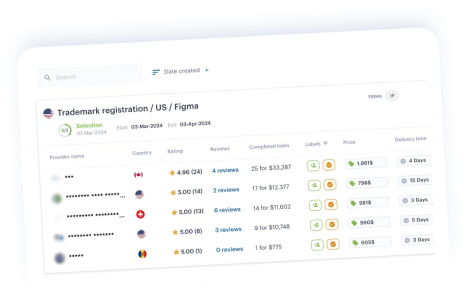Why Patent Renewals Are a Strategic Task
Many innovators ask: can you renew a patent once it’s granted?
Yes — and renewal is a critical process that determines whether your innovation remains protected or moves into the list of expired patents.
Even a single missed payment can result in the loss of patent rights or lead to costly restoration procedures.
This guide explains how to make patent renewals simple, predictable, and transparent. You will learn how to organize your IP portfolio, plan renewal budgets, automate reminders, and maintain control across all jurisdictions.
Key Terms You Should Know
Annuities / Maintenance fees — periodic payments required to keep a patent active.
Base date — the starting point for calculating renewals.
Due date — the next payment deadline.
Grace period — an additional period after the due date (usually with a surcharge).
Surcharge — an extra fee charged during the grace period.
Lapse — loss of rights due to non-payment.
Renewal cycles by region
- United States: counted from the grant date (3.5, 7.5, and 11.5 years).
- Europe (EPO), China, UAE: counted from the filing date, annually.
- Japan, India: counted from the grant date, annually.
Understanding how the renewal clock runs in each country is a key element of effective IP management.
Renewal Cycles Explained
Patent renewal schedules vary across jurisdictions, but most fall into two main categories.
1️⃣ Annual Renewal Model
This model requires maintenance payments every 12 months for each active patent. It is used in Europe, China, Japan, India, and many other regions.
Fees typically increase slightly each year as the patent ages, and a six-month grace period is available in most countries if the renewal is missed.
Annual renewals provide flexibility but can create complexity for companies managing large patent portfolios across multiple time zones and currencies.
2️⃣ Stepped Renewal Model
In countries such as the United States, maintenance fees are due three times: at 3.5, 7.5, and 11.5 years after the grant date.
Each installment covers several years of protection and grows in cost over time.
Missing one of these payments usually causes immediate lapse, turning the invention into an expired patent.
The “−90 / −30 / −7” Reminder Framework
This system is widely used to avoid missed deadlines and ensure smooth renewals:
- 90 days before due date: verify data, ownership, and cost estimates.
- 30 days before: confirm agent instructions, POs, and payment readiness.
- 7 days before: double-check status, prepare a grace-period backup plan, and escalate if needed.
This structured timeline helps teams stay proactive, maintain control, and ensure full traceability of decisions within the IP portfolio.
Understanding Patent Renewal Fees
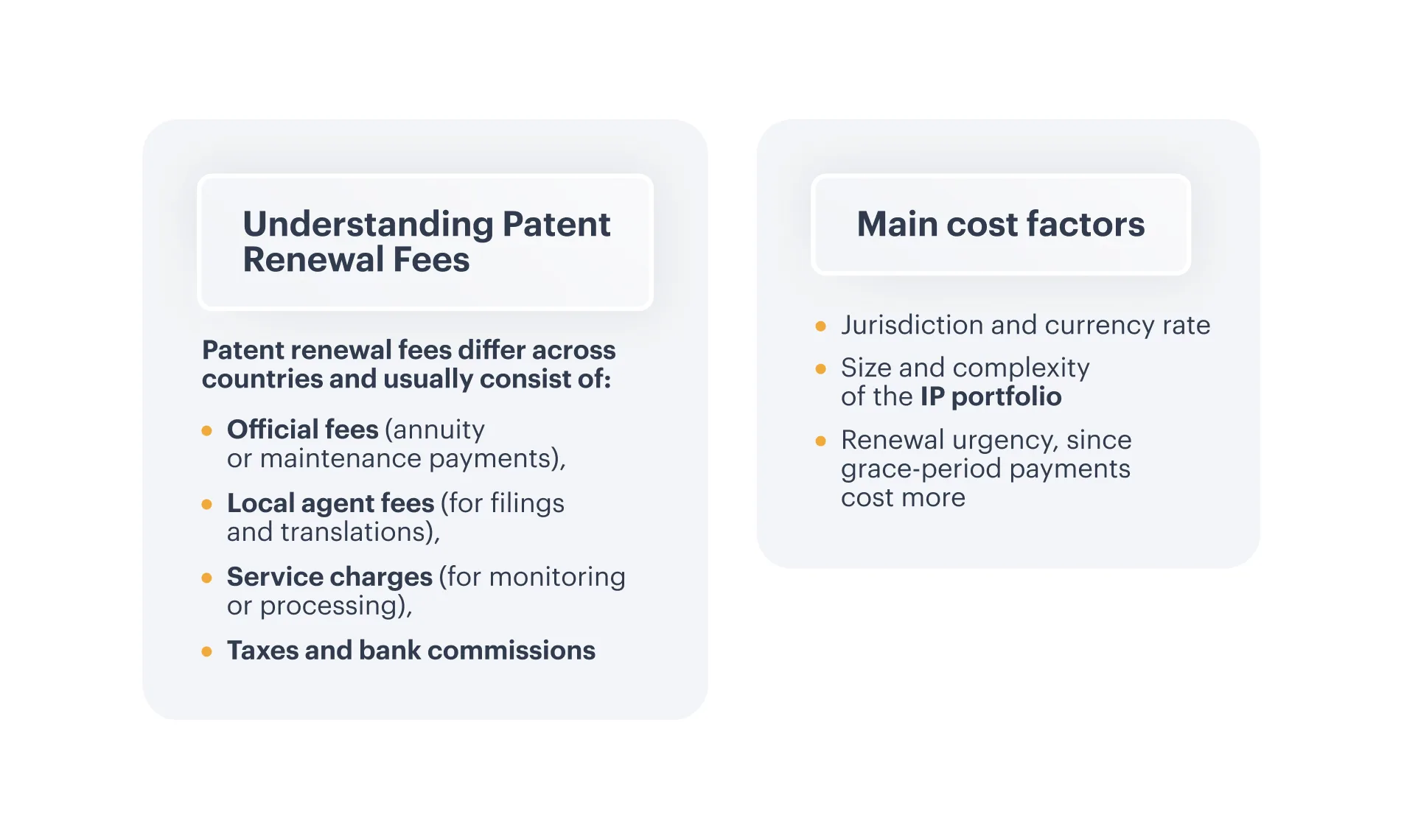
What Makes Up the Total Cost
- Official fees — also known as annuity or maintenance payments, these are mandatory government charges for keeping a patent active. They vary by jurisdiction and often increase as the patent ages.
- Local agent fees — in most countries, filings and payments must go through accredited patent attorneys or local representatives. Their fees cover document handling, translations, and communication with the patent office.
- Service charges — when renewals are managed through a platform or third-party provider, service fees include portfolio monitoring, deadline tracking, reminders, and coordination of multiple agents. Transparent providers separate these costs clearly from official fees.
- Taxes and banking costs — some countries apply VAT or similar indirect taxes on service work. Currency conversions and international bank transfers can also add transaction costs, especially when paying in multiple currencies.
What Drives the Price
The total patent renewal fees depend on several key factors:
- Jurisdiction: government fees differ widely — renewals in the U.S. or Japan are typically higher than in India or South Africa.
- Patent family size: each family member (national or regional filing) requires a separate payment, which multiplies the total cost.
- Urgency and grace period: if payment is delayed and enters the grace period, surcharges may apply. Urgent renewals through local agents may also require additional handling costs.
- Currency and exchange rate: fluctuations between local currencies and USD/EUR can significantly affect annual budgets.
- Administrative setup: whether the renewal is handled manually, through local counsel, or via automated IP management solutions changes the service fee structure.
💡 Tip: Create a 12-month forecast for your renewals calendar. A structured approach prevents unexpected costs and supports long-term financial planning.
If you’re budgeting for patent renewal fees, consider automating calculations through your IP system — this ensures cost transparency and prevents last-minute surprises.
Portfolio Triage: What to Keep, Review, or Drop
Not every patent should be renewed indefinitely. To make informed decisions, apply this simple matrix:
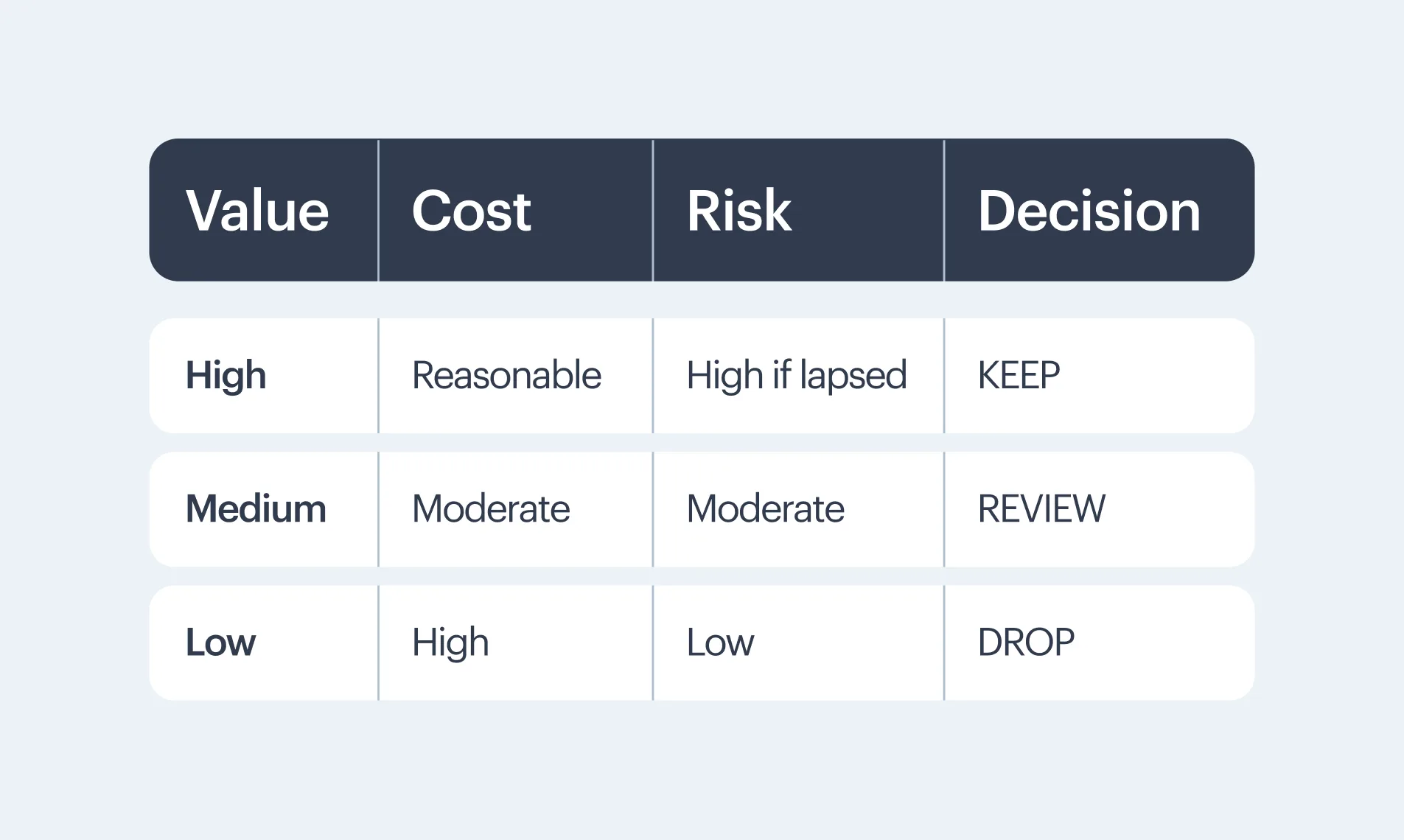
- KEEP: critical technologies, active licensing deals, ongoing litigation.
- REVIEW: borderline or overlapping assets.
- DROP: outdated inventions or non-core markets.
If you plan to patent an idea or expand protection into new regions, include it in your annual renewal forecast to balance future costs against existing maintenance obligations.
Documenting renewal decisions through an audit trail helps maintain accountability and proves that expired patents were released intentionally, not through error.
Operational Checklist (−90 / −30 / −7)
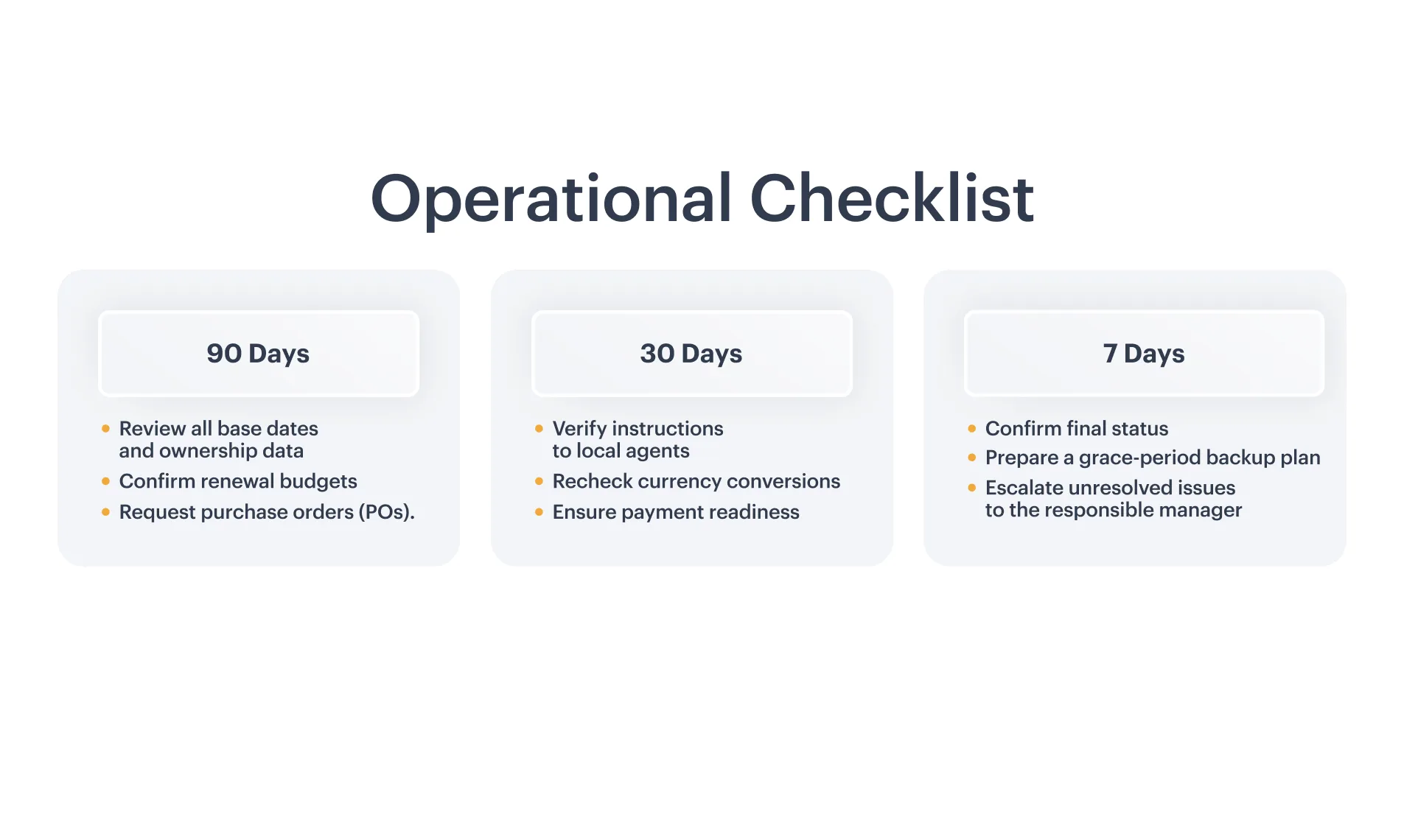
After payment, obtain official confirmation and upload it to your IP management system for record keeping.
Typical Mistakes and How to Avoid Them
- Using incorrect base dates or missing time-zone differences
Maintain a reference guide for each jurisdiction — the U.S. counts from the grant date, the EPO from the filing date, and most Asian offices from the grant date.
Store deadlines in UTC format and display them locally. Add validation at the −90 stage and a due-date check at −30. - Duplicating renewals manually in spreadsheets
Manual control often leads to missed deadlines. Centralize all data in your IP management platform, restrict edits, and use automated reminders. - Payment delays caused by incomplete banking details or missing POs
Prepare payment data 90 days ahead, verify exchange rates, and confirm treasury readiness. Keep a checklist for every patent renewal fee payment. - Relying on a single external vendor
Always have at least one backup provider per country. Compare SLAs, pricing, and reliability to avoid vendor lock-in. - Lack of a unified record of KEEP / DROP decisions
Use a single dashboard to track renewal strategy and keep supporting documents. Update this record before each budget cycle.
These practices minimize the chance of expired patents and help maintain a healthy, well-documented patent portfolio.
How Platforms Like iPNOTE Simplify Renewals
Modern platforms such as iPNOTE help companies manage renewals with precision and transparency.
Key advantages include:
- A centralized renewal system for all countries with automated docketing and layered reminders
- A budget forecast by month, country, and patent family, updated with live currency data
- A provider marketplace with 1,000+ verified agents offering fixed fees, escrow protection
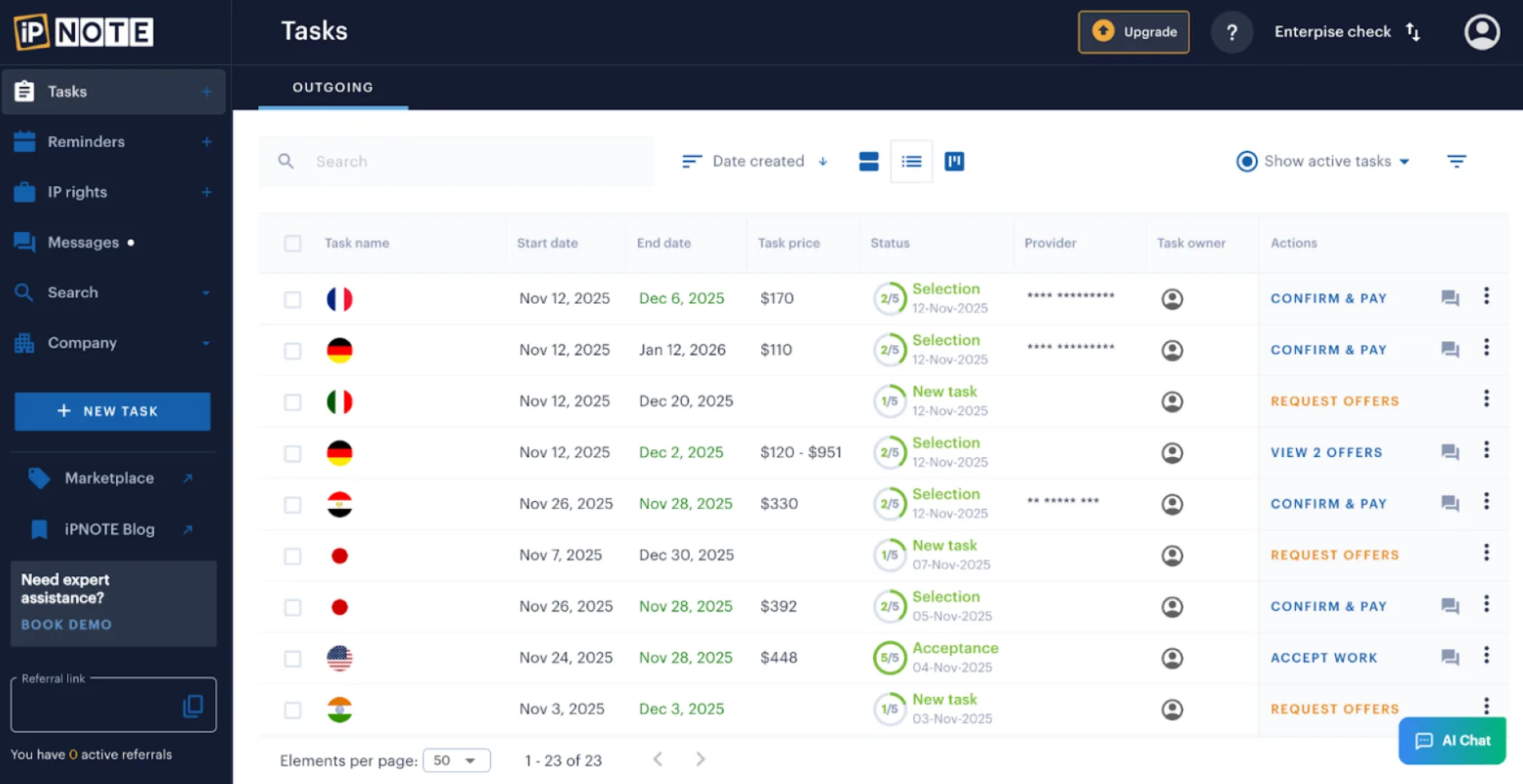
With iPNOTE, you can renew a patent in minutes and keep your global IP portfolio synchronized. The platform provides full visibility, reduces costs, and eliminates the need for manual tracking.
Conclusion and Next Steps
Patent renewals are a vital part of protecting your company’s innovation.
Whether you want to patent an idea or maintain your existing portfolio, automation ensures you never ask again, can you renew a patent on time?
By organizing renewal data, automating reminders, and forecasting patent renewal fees, you can prevent lapses and secure your assets for the long term.
Start today — upload up to 20 IP assets for free in iPNOTE and receive a 12-month forecast of your upcoming renewals.
Compare offers from verified providers and see how automated, on-time renewals simplify IP management and strengthen your patent portfolio.






